Best Budget 3D Printers under $250, $750, and $1000 (2023 Guide)
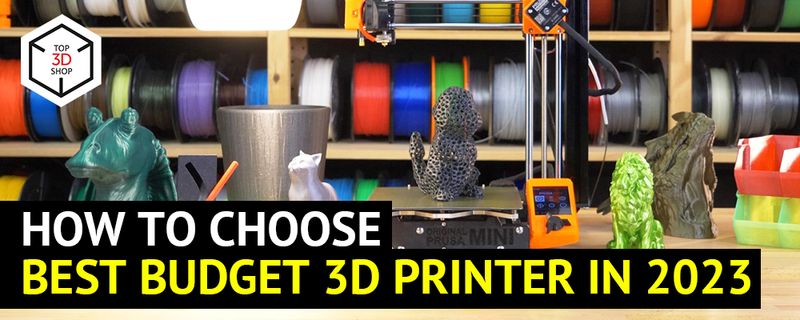
It is hard to imagine that just a dozen years ago 3D printing was an exceptionally costly sphere serving as a mere tool for specific purposes. Not until fairly recently, the manufacturers have begun to take into account more categories of users, including aspiring creators and small businesses, which has paved the way for the budget segment of 3D equipment. Therefore, it is no longer a problem to find an affordable yet high-quality additive manufacturing device for almost any individual use.
This is Top 3D Shop, and today we will guide you through the best budget FDM and resin 3D printers of 2023, including the key points to consider when choosing the one for yourself.
Understanding 3D printing
Before we unveil our top picks, let’s quickly recap what 3D printing is. Basically, it is a fascinating technology also known as additive manufacturing that builds three-dimensional objects from digitals files. How cool is that?
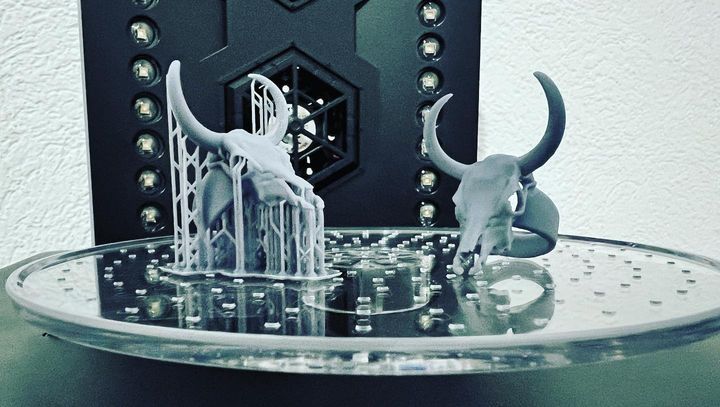
Credit: @ing3nia / Instagram
Working with 3D printers
3D printers operate by layering material, typically plastic or even metal, one layer at a time until the desired object is completed according to the digital 3D model. Think of it like building a skyscraper but on a tiny scale.
So, if you need to print something, first you should download or prepare a digital file of the future model (usually in the STL or OBJ format) with the proper software called slicer. At this point, necessary print settings are created. Then, the file is transferred to the printer through available connectivity options, mostly USB or LAN.
Another important part is the material that makes up a 3D printed object. It varies depending on the printer technology, from plastic filament to resins and powders. We will dwell upon this later.
As soon as the printer gets the file of the future model, it starts constructing a physical object by applying a large number of layers of material to the build plate. During this process, the device follows the commands specified by the computer or included in the file. And that is the very essence of 3D printing.
Benefits of 3D printing
Lately, when 3D printing has advanced so far, its possibilities are limited only by our imagination and, of course, budget. What can not but please aspiring makers is the fact that 3D equipment has become much more accessible, which is quite inspiring and promotes development of multiple spheres that can benefit enormously from applying various AM technologies.
Except for the part where one is able to create just about anything, even food, 3D printing pushes the boundaries of traditional methods, accelerates the manufacturing process, and boosts creativity while reducing production costs and waste. So, this is a great way to turn imaginative ideas into tangible realities for beginners, hobbyists, experienced makers, researchers, and business professionals alike.
How to pick a budget 3D printer
Before we dive into the list, let’s understand what factors you should keep in mind when selecting a budget 3D printer.
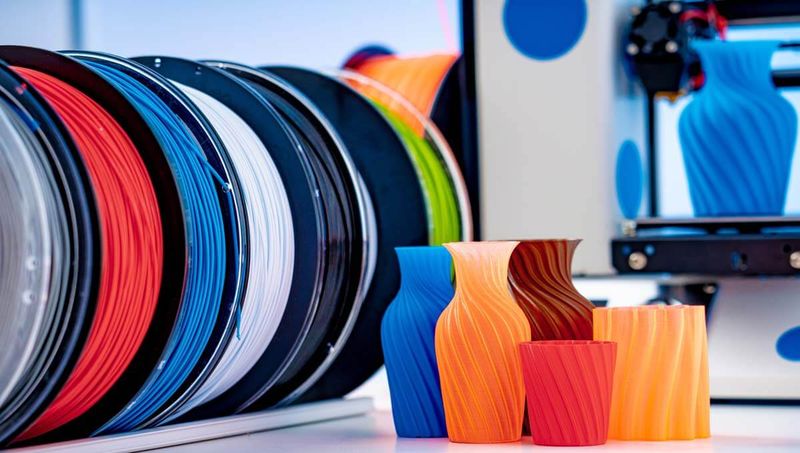
Credit: 3dprintingspot.com
Printer type
There are various types of 3D printing technologies like FDM (Fused Deposition Modelling), SLA (Stereolithography), and SLS (Selective Laser Sintering). Each comes with its advantages and price ranges.
For instance, FFF/FDM printing is considered the most budget option in terms of both equipment and materials. It is generally more available, versatile, and easy to master, so a 3D printer of this type can serve as a perfect starting point for future makers.
As for resin 3D printing technology, over the years it has become vastly popular due to its ability to produce highly accurate objects with complex geometry and fine detailing. Apart from pricier materials, this method also implies more difficult post-processing and lesser build volumes.
Resolution
The resolution measured in microns determines the level of detail a printer can produce. It’s very simple: the fewer microns, the higher the detail.
Print bed
Consider whether the printer has a heated print bed, which helps improve the adhesion of the first layer and prevent warping, especially when dealing with demanding materials. With SLA devices, the cover of the build platform is also of great importance.
Materials supported
Different printers work with different materials, such as PLA, ABS, nylon, etc. Resins and powders have their own peculiarities resulting in various properties of printed objects, including durability, strength, surface quality, and other characteristics of the final product.
Ensure the printer you choose supports the materials you intend to use to achieve the best possible outcomes.
Safety features
Consider searching for a printer with multiple safety and quality-of-life features, such as auto-shutoff, power-loss recovery, filament runout detection, ventilation, and thermal runaway protection for safe and comfortable operation.
Things to consider before buying a budget 3D printer
Before purchasing a 3D printer, there are several key factors to consider.
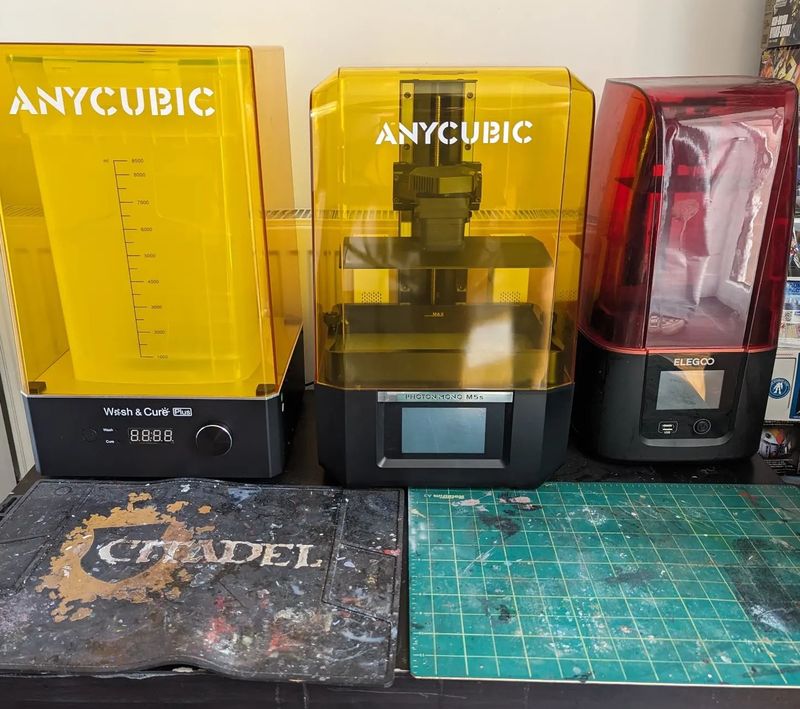
Credit: @idleandy / Instagram
How it will be used
First, you need to be clear about your future applications. Will you use the printer for hobbies, design, creating prototypes, modeling, or small-scale manufacturing? The purpose will significantly influence the type of 3D printer you choose. The certainty will make the selection easier.
Knowing your budget
3D printers come in a wide price range, from budget-friendly models under $200 to professional-grade machines costing several thousand dollars. Setting a realistic budget that aligns with your requirements and expectations is crucial.
Printing materials
Lastly, printing material compatibility is vital. Certain products require specific materials depending on their purpose. For example, end-use parts demand using high-performance consumables to meet the requirements of the application sphere. The printer you choose must support a proper scope of materials.
Best budget FDM 3D printers in 2023
Now, let’s finally look at the top picks for budget 3D printers in 2023 starting with FDM devices. We have categorized them into different price ranges, build sizes, and special properties for everyone to find the best suitable model for their needs.
Under $1000 — Bambu Lab P1P
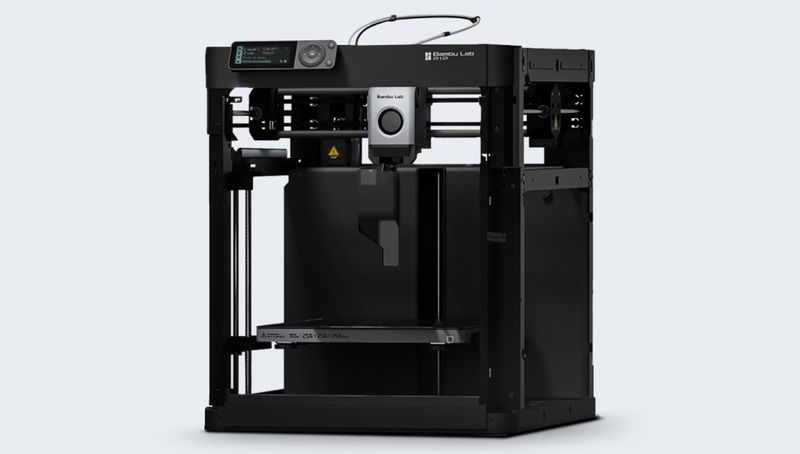
The Bambu Lab P1P is a compact desktop FDM 3D printer designed for both beginners and professionals. Due to a set of unique features in combination with a fairly affordable price, the device is lately of particular interest.
First and foremost, the Bambu Lab P1P is famous for its remarkable print speed of 500 mm/s and can reach an acceleration of up to 20000 mm/s² without sacrificing print quality. This is achieved thanks to precise CoreXY kinematics with linear rods on Z and Y axes and carbon rods on the X-axis, which also makes for smooth movements during the printing process. In addition, high stability and consistency are ensured by the built-in vibration compensation mechanism and pressure advance.
What makes the P1P model stand out from competition is its customizable design. Users can order various side panels from the official website or 3D print any design by themselves to give their device a unique look. With a variety of smart automated features and pre-configuration, you can start printing right out the box, which is great news for beginners.

Credit: @print3dbrighton / Instagram
- The printer’s high speed and acceleration make it efficient for a wide variety of applications, including professional spheres.
- The vibration compensation and pressure advance features ensure smooth and accurate prints.
- To provide proper adhesion and easy removal of the finished parts, the P1P is equipped with a flexible PEI-coated build plate.
- Due to the direct-drive extruder, the machine offers better control of flexible filaments, leading to precise and reliable extrusion.
- The automatic bed leveling and remote control via proprietary software and mobile app make the printer really easy to use.
- The Bambu Lab P1P comes with advanced features like fans with rapid feedback, filament run-out sensor, and power loss recovery, which can be very useful for long prints.
- While the printer is designed for both entry-level and experienced users, the advanced functions and technologies may present a learning curve for beginners.
- The printer might be considered expensive by some, especially those who are just starting out with 3D printing.
- While the P1P can be controlled via Bambu’s slicer and mobile app, users who prefer other software might find this limiting.
Under $500 — Creality Ender-3 S1
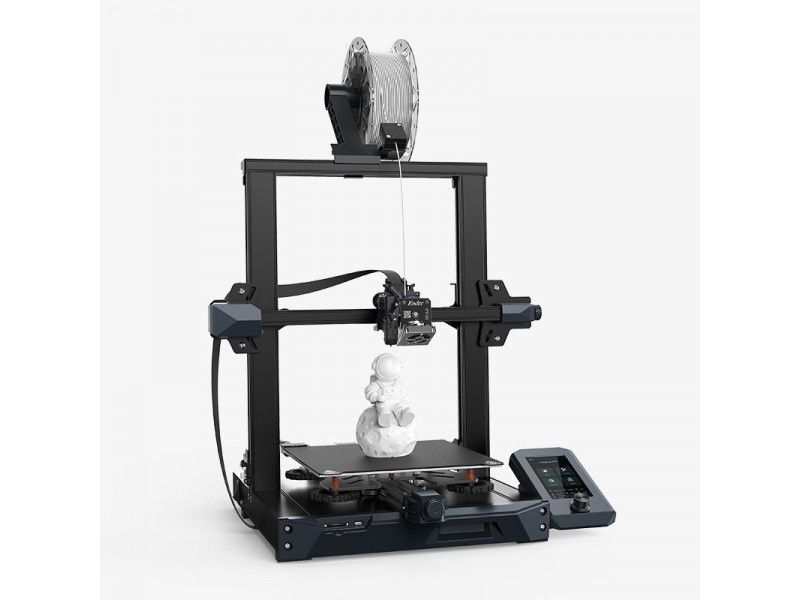
As a successor of the Creality’s popular Ender-3 model, the Ender-3 S1 boasts some major changes making it a perfect FDM 3D printer for everyday high-quality production. Along with advanced functionality, it offers a user-friendly experience and is considered an ideal starter 3D printer for a number of reasons.
For starters, the S1 is equipped with the company’s new proprietary “Sprite” dual-gear direct extruder with two chrome steel gears that makes for more comfortable and reliable printing with different types of filament. Thanks to a dual motor-driven Z-axis system, the machine provides a smoother synchronized movement, which is important for stable, precise, and accurate printing, not to mention silent operation.
What also makes the Creality Ender-3 S1 great for hobbyists and beginners is a set of quality-of-life features, such as automatic bed leveling, filament runout detection, and print resume function. Besides, the print size of 220 x 220 x 270 mm is suitable for a variety of personal and professional applications.
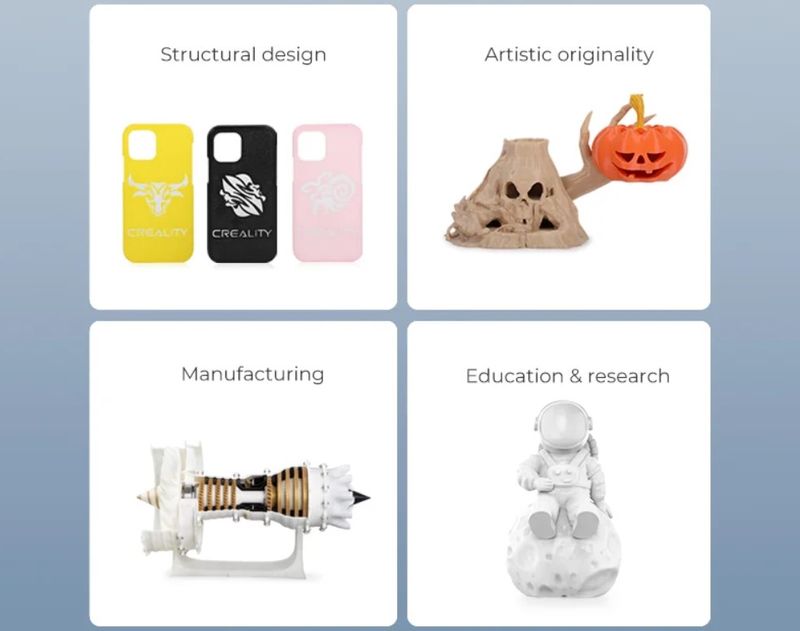
- The Ender-3 S1 consistently delivers high-quality prints with minimal effort from the user.
- The nozzle temperature can go up to 260 °C, which is good enough for standard PLA, ABS, PETG, and TPU printing.
- The printer comes mostly assembled and requires only 6 simple steps to start printing, making it ideal for beginners.
- The direct extruder makes filament loading easy, and the dual-geared assembly powerfully grips the filament from two sides.
- With the auto-leveling feature as well as flexible metal sheet that attaches magnetically to the base, the printing process is smooth and streamlined.
- The printer does not have a traditional touchscreen or Wi-Fi connectivity, which can limit its ease of use.
- It might take some time to get the software settings right for optimal printing.
- Some users have reported issues with the nozzle not getting close enough to the plate for the filament to stick, regardless of Z-axis adjustments.
Under $300 — Anycubic Kobra
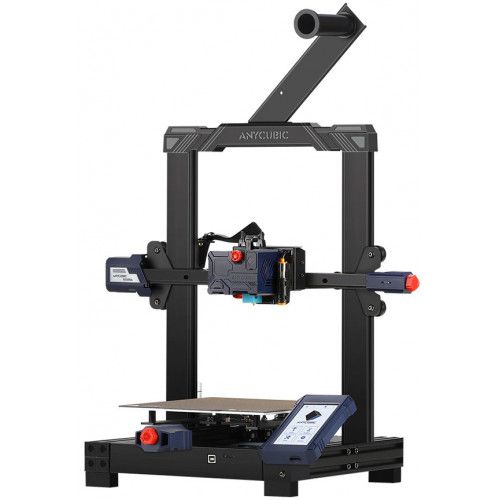
The Anycubic Kobra is a profoundly user-friendly FDM 3D printer that can serve as an excellent tool for beginners and those looking to upgrade from a cheaper model. Apart from its lightweight modular design and large build plate, the device offers a number of smart functions making it a great machine for 3D printing enthusiasts.
One of the most notable features of the Anycubic Kobra is its self-developed leveling algorithm — LeviQ, which offers a 25-point smart and precise calibration for hassle-free printing and ensures a perfect first layer. The latter is also provided by the spring steel magnetic platform, which can withstand high-intensity printing and thus saves you a lot of maintenance cost.
The printer’s integrated direct extruder boasts great force and precise filament control even at an average print speed of 80 mm/s, which is useful when working with flexible materials. In addition, its components are all packaged into one single front-mounted object, making it easy to insert the filament. Last but not least, the Kobra features intuitive touch screen controls that give you easy access to all of the printer’s settings.
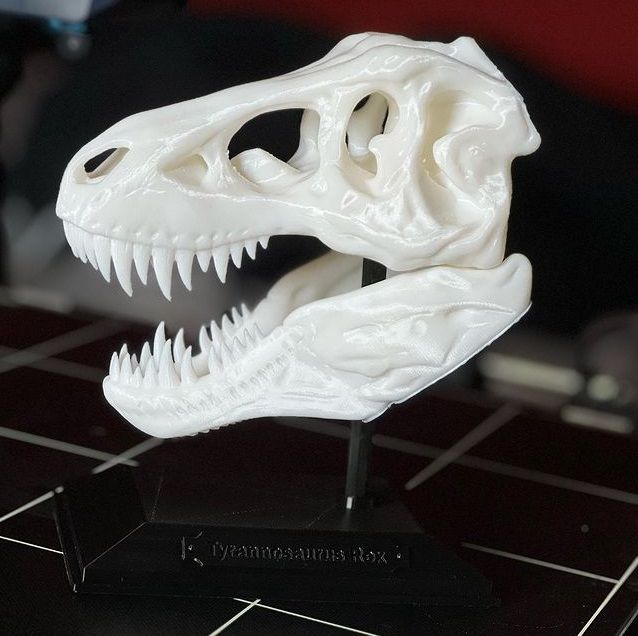
Credit: @3dprint.oderso / Instagram
- The machine is easy to assemble, adjust, and use, making it a perfect option for beginners.
- The Anycubic Kobra consistently delivers high-quality prints with minimal effort from the user.
- The auto-leveling feature as well as the direct-drive tool head make the printing process increasingly smooth and streamlined.
- With an open design and a decent build volume of up to 220 x 220 x 250 mm, the device can print quite large models for daily and household use in one go.
- The spring steel heated bed provides secure adhesion, easy print removal, and remarkable wear resistance.
- The printer relies on a microSD card for transferring files from the user’s PC, which can be easy to lose due to their small size.
- There is an issue of initial stringing where newly melted plastic leaks through the nozzle.
- The Kobra model struggles with small, detailed prints, making it less suitable for complex figurines or objects with intricate structures.
Under $200 — Voxelab Aquila X2
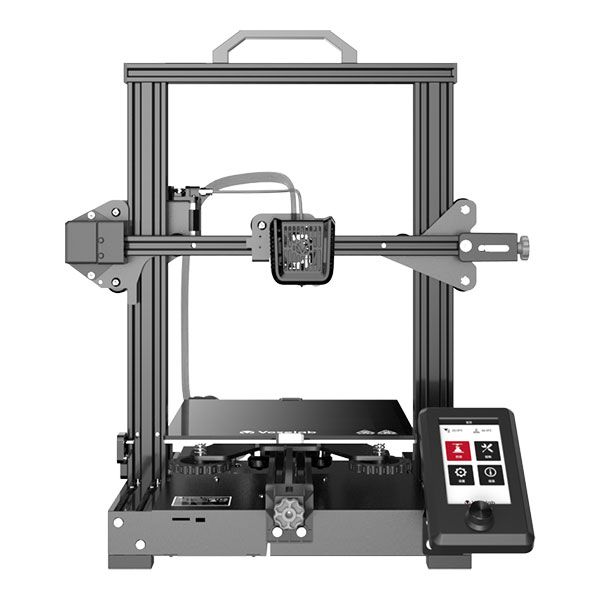
The Voxelab Aquila X2 is a so-called personal 3D printer that is gaining popularity for its impressive functionality and high performance. Its decent print quality and user-friendliness are ensured by a careful selection of mechanisms and features, such as filament runout detection, auto-resume printing, automated feeding, etc.
The machine comes with a tempered glass plate on top of the heated bed, reducing warping issues for your 3D prints. To achieve proper stability and reliability, the Voxelab Aquila X2 is built with an aluminum body with sturdy structure and a convenient portable handle, making it easier to move the printer from one location to another. And when it comes to mechanical tweaks, it has XY axis tensioners to adjust belt tension by simply twisting the wheels.
As a perfect model for household use, the Aquila X2 is engineered with a 32-bit silent motherboard and stepper drivers that guarantee quiet operation producing sounds at below 50 dB. The large 4.3" display screen makes it easy to control the printer’s settings and select a desired print file. Overall, it is a perfectly balanced device in terms of its build volume (220 x 220 x 250 mm), print quality, and ease of use.
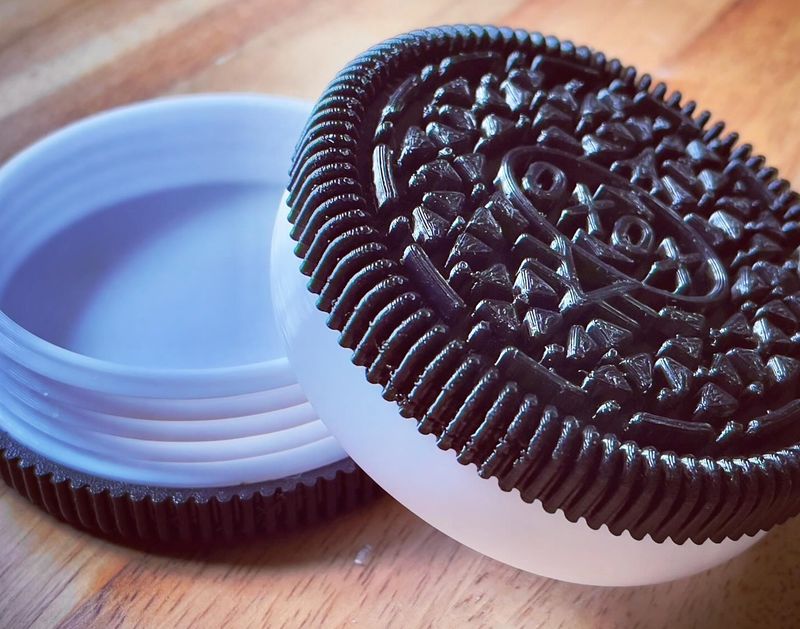
Credit: @infini3d_official / Instagram
- The Aquila X2 offers high precision and excellent print quality.
- Compared to similar machines, the printer is competitively priced.
- With simple assembly, vibrant UI, and intuitive controls, the printer is great for beginners.
- The printer’s build plate can heat up in just 5 minutes.
- Except for the fans, the device operates relatively quietly.
- The Aquila X2 fully supports Cura, Prusa, Simplify3D, and VoxelMaker software, so the user can prepare print models in the slicer they are used to working with.
- The device comes semi-assembled and is ready to print in 10–20 minutes after unboxing.
- With all of its smart features, the Voxelab Aquila X2 lacks auto-leveling.
- The fans are fairly loud compared to the rest of the printer, but they can be replaced with quieter ones.
- Some users have reported running out of text space when selecting models to print.
- There have been complaints about the bed fixture that was kind of loose, requiring additional tightening for proper stabilization.
Premium — Bambu Lab X1 Carbon
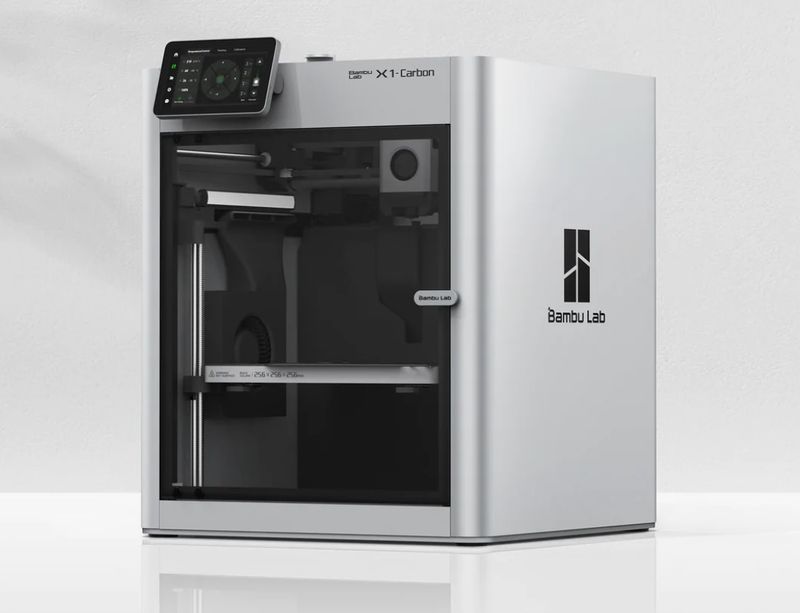
For a desktop FDM 3D printer, the Bambu Lab X1 Carbon boasts a large build volume of 256 x 256 x 256 mm, powerful printing capabilities, and a variety of advanced features, such as a filament cutter, Bambu Micro Lidar for auto calibration, spaghetti detection, active vibration compensation, power recovery function, and filament runout sensor. In addition, thanks to the enhanced components and sophisticated thermal control, the machine provides wider material compatibility.
Based on the CoreXY motion system, the X1 Carbon allows for much faster printing than Cartesian 3D printers while not sacrificing print quality. If you plan to work with demanding materials, the printer features an all-metal hotend that can reach temperatures of up to 300 °C. With the abrasion-resistant hardened steel variant, it is also capable of handling carbon and glass fiber-reinforced composites.
As a printer from the premium price segment, the Bambu Lab X1 Carbon might be a bit expensive for some users. Still, given the device’s advantages, it can be considered a good investment, especially with some extras. For example, an optional automatic material system (AMS) allows combining up to four different filaments in one project, making it possible to build multi-color or multi-material models. Plus, the X1 Carbon is supplied fully assembled, tuned, calibrated, and tested before shipping, so one can enjoy printing right out of the box.
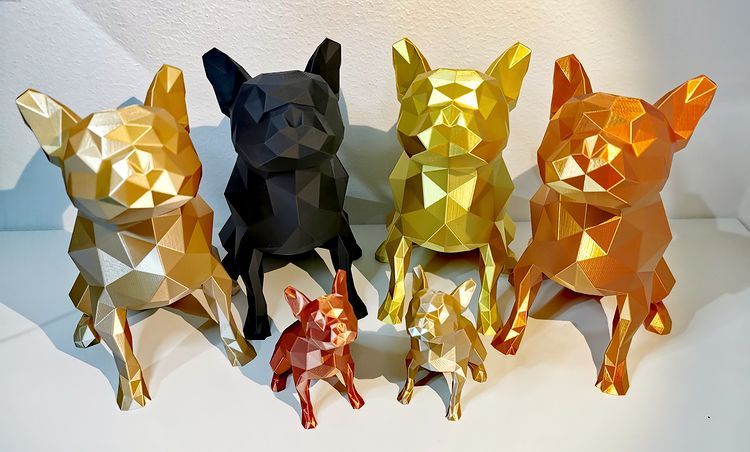
Credit: @tr33d_print_the_future / Instagram
- The model offers exceptional print quality combined with print speed up to 500 mm/s.
- Due to smart Lidar-assisted auto bed leveling with an accuracy of 7 microns, one will get an ideal print bed flatness, proper adhesion, and perfect first layer.
- To make the creator’s life easier, the X1 Carbon can use snap-away support material or dissolvable filament and thus minimize the pain of removing supports.
- The machine is capable of printing with a wide range of materials, including PLA, PETG, TPU, ABS, ASA, PVA, PET, PA, and PC.
- The printer features Wi-Fi connectivity and allows for remote print monitoring and management of multiple devices via a proprietary mobile app.
- Supplied fully assembled, the machine is ready to print in no more than 15 minutes after unboxing.
- The Bambu Lab X1 Carbon can be easily upgraded over time to get even more printing benefits with a number of thoughtful add-ons.
- Since the machine lacks an AUX fan, this can limit the print speeds for certain materials like PLA, TPU, and PETG.
- By default, the X1 Carbon is equipped with a stainless steel nozzle, which might be a problem when printing abrasive materials infused with carbon or glow-in-the-dark filament, for which one needs a hardened steel extruder unit.
- Without a built-in carbon filter, some filaments, especially ABS, emit unpleasant odor, which can be considered an issue.
Dual extrusion — Flashforge Creator Pro 2
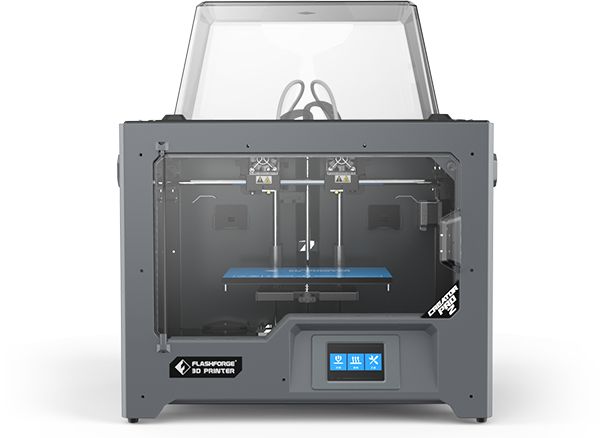
For those seeking a multi-purpose dual extruder 3D printer at a budget price, the Flashforge Creator Pro 2 is a great choice with an impressive range of useful features, modes, and capabilities. Apart from an efficient dual extrusion system, it is equipped with nozzles that can heat up to 240 °C, a heated print bed, and enclosed chamber, allowing it to handle high-temperature materials and ABS-type filaments.
As an upgraded version of the classical Creator series, the Flashforge Creator Pro 2 is suitable for beginners due to its higher quality and easier operation. To ensure smooth and hassle-free printing, the device features improved nozzle design that prevents clogging and eliminates residues. The printer also effectively solves the stringing issue that is common for classical IDEX machines.
Being an entry-level device, the Creator Pro 2 allows for producing top-quality and originally designed household items, prototypes, souvenirs, props, cosplay accessories, etc. Thus, it is a perfect option to consider for hobbyists, tinkerers, and small businesses.
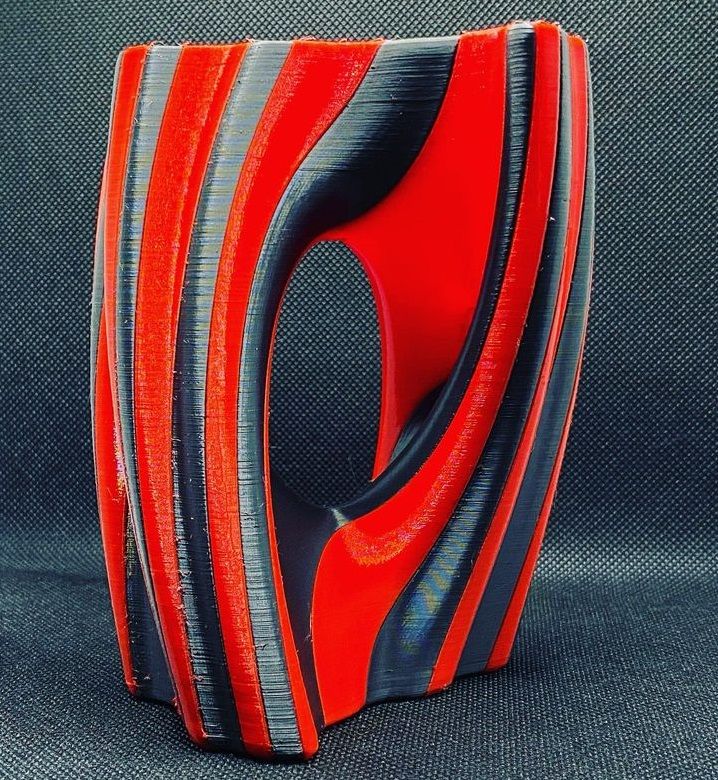
Credit: @3d.druck.fuchsi / Instagram
- The Flashforge Creator Pro 2 is a multi-functional IDEX 3D printer that offers a variety of printing modes, including mirror, duplicate, dual filament, and dual color modes.
- The machine can efficiently work with a wide range of materials, including PLA, ABS, HIPS, TPU, and more.
- The printer features a fully enclosed frame that ensures reliable and consistent performance with demanding filaments.
- Promoting ease of use, the Creator Pro 2 comes fully assembled and features an assisted bed leveling system as well as user-friendly LCD touch screen with intuitive controls.
- The build volume of the device is relatively small compared to other printers in the same price range.
- The Creator Pro 2 lacks a pre-installed camera for monitoring.
- Without an auto-leveling system, the calibration process might become a bit challenging for beginners.
Small/mini — Original Prusa Mini+
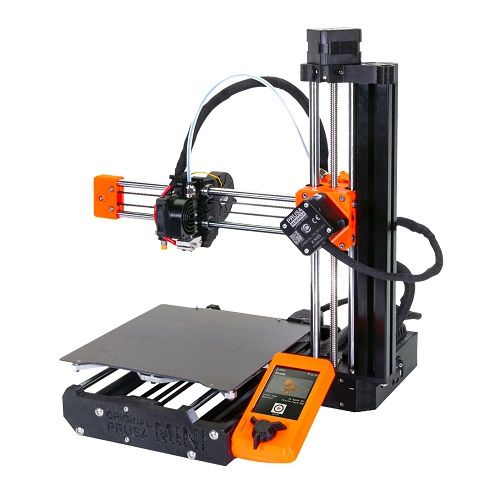
With the Original Prusa Mini+, size does not affect print quality and user experience: this compact machine has many nice surprises in store. If you aim for outstanding print quality and reliable outcomes in combination with portability, variability, and ease of use, this model under $500 is the right place to start.
Being a next-gen replacement for the Prusa Mini, this version features a number of improvements, such as sensorless homing, automatic mesh leveling, replaceable nozzles, network connectivity, USB printing, and a full-color LCD screen. Similar to its predecessor, the Mini+ comes with a heated magnetic print bed with removable spring steel sheets of various textures for optimal print results with different filaments.
The Original Prusa Mini+ is compatible with a wide range of materials, including PLA, PETG, ASA, ABS, PC, HIPS, PP, Nylon, Woodfill, and others. Moreover, alongside the proprietary filament line called Prusament, one can use various third-party materials optimized for Prusa 3D printers. In terms of safety, the Mini+ is equipped with three thermistors, a high-quality power supply, fan monitoring and self-diagnostics functionality, so there really is nothing to worry about.
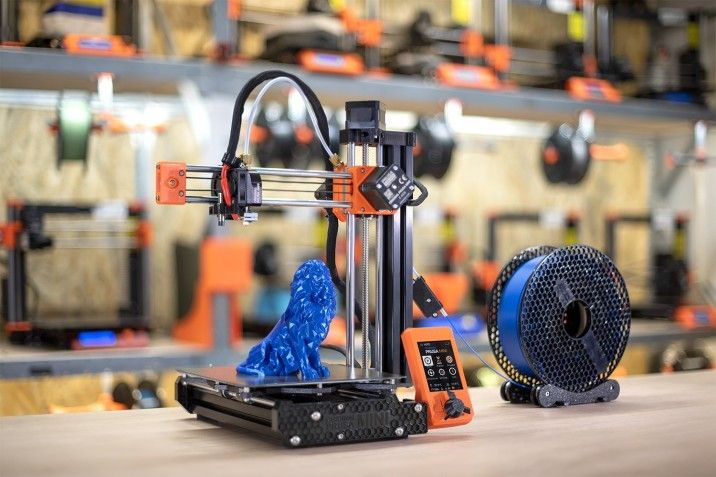
- The Original Prusa MINI+ offers outstanding print quality and is easy to set up and use.
- For proper first level adhesion, the printer features swappable magnetic print sheets and auto mesh bed leveling.
- Due to the custom-made 32-bit Buddy mainboard with TMC2209 silent stepper motor drivers, the device allows for sensorless X and Y-axis homing, silent operation, and farmability.
- With an excellent price-performance ratio, the model is great for both beginners and experienced users.
- The printer is available as a DIY kit or as a semi-assembled version which only requires the user to connect the main parts together.
- The Mini+ has a limited build volume, which may not be suitable for users who need to print larger models.
- Equipped with a Bowden extruder, the device can be a bit difficult to use with flexible filaments compared to a direct drive extruder.
Mid-size — Sovol SV06 Plus
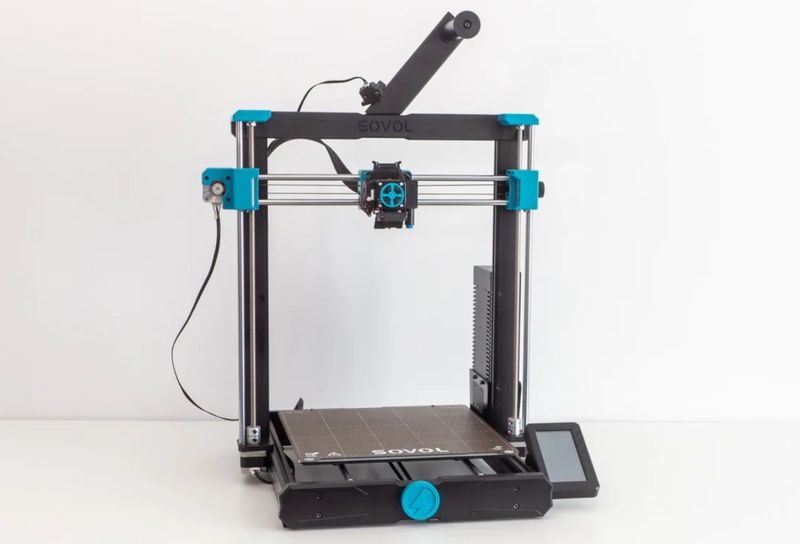
Looking for a capacious build volume for your prints? The Sovol SV06 Plus features a build size of 300 x 300 x 340 mm alongside ample printing capabilities and ease of use. It has a double Z-axis for enhanced stabilization, PEI-coated print bed, all-metal hotend with larger melt zone that can reach 300 °C, instant thermal runaway protection, and automatic leveling through the inductive sensor with 25 points.
One of the main features of the printer is its self-developed Planetary direct drive extruder with a unique gear set, which provides higher drive ratio and a lighter motor. Thanks to this particular construction, the Sovol SV06 Plus is able to reach print speed of up to 150 mm/s. What’s more, the original 32-bit Mainboard with TMC2209 guarantees stable, silent, and safe operation of the device.
With a good balance between price and performance, the Sovol SV06 Plus is a good choice for aspiring creators who are looking for a large FDM 3D printer with multiple features that improve user experience and print results with no excess costs.
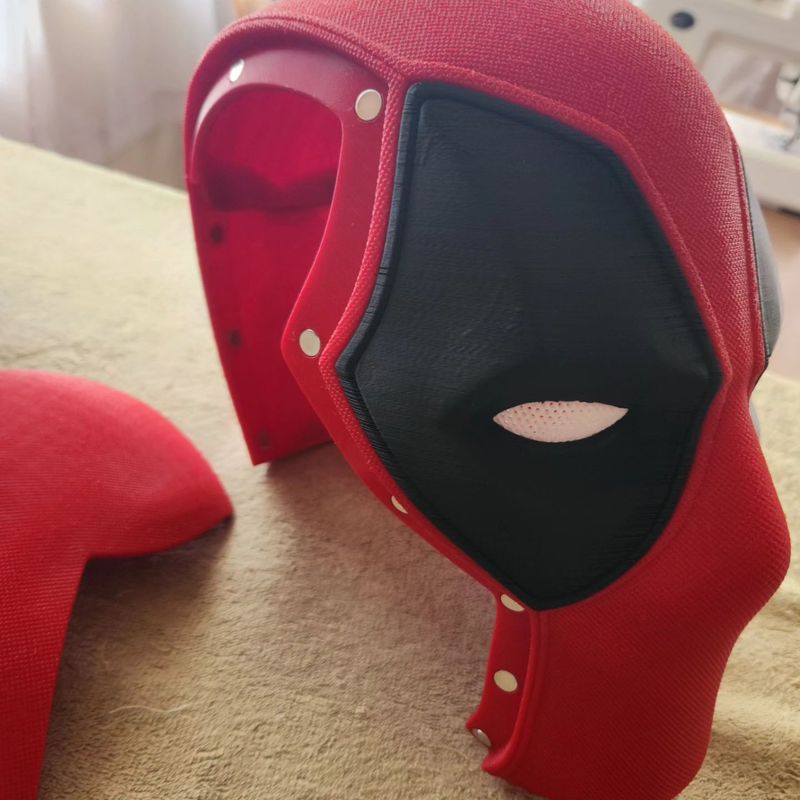
Credit: @will.i.am3d / Instagram
- Equipped with the brand all-metal direct drive extruder, the machine offers accurate and consistent filament feeding.
- Due to high-quality components, the Sovol SV06 Plus is capable of rapid printing with a wide range of materials, such as ABS, TPU, PETG, PC, ASA, Nylon, Carbon Fiber, and Wood.
- In terms of user-friendliness, the printer is equipped with a convenient 4.3" touchscreen, intuitive UI, handy belt tensioners, filament runout sensor, and resume printing function.
- The machine provides easy assembly and operation.
- The model does not have a cable strain relief on the print bed. This could potentially lead to a fire risk if the cables were to break due to the considerable amount of current flowing through them.
Large-format — Anycubic Kobra Max
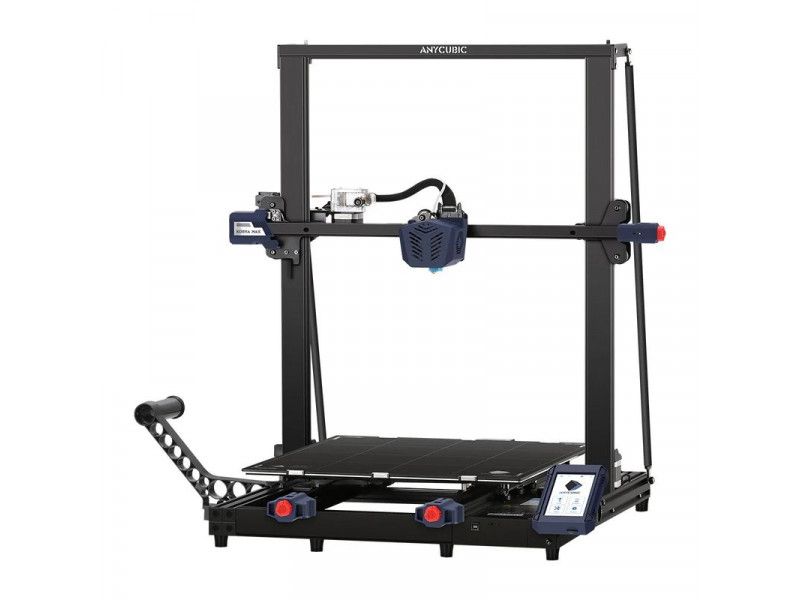
If the previous model is not enough for your needs, pay attention to the Anycubic Kobra Max. With a massive build volume of 400 x 400 x 450 mm and open design, this high-performance FDM 3D printer allows realizing the most ambitious printing projects regardless of size, including batch production. In its price range, it is one of the biggest machines currently available.
Apart from its build size, the Kobra Max boasts multiple functions that ensure smooth operation and impressive printing results. Above all, it comes with the proprietary Anycubic LeviQ auto bed leveling function for streamlined user experience. To further improve print quality and stability, the device is engineered with a reinforced aluminum frame, bowden extruder setup, and double thread Z-axis powered by two motors and two lead screws, which greatly reduces wobbling.
Other useful features of the Anycubic Kobra Max are filament runout detection and print resume function. Also, thanks to the silent stepper motors, the machine is rather quiet with the operating noise level not exceeding 60 dB, which is particularly important for personal applications.
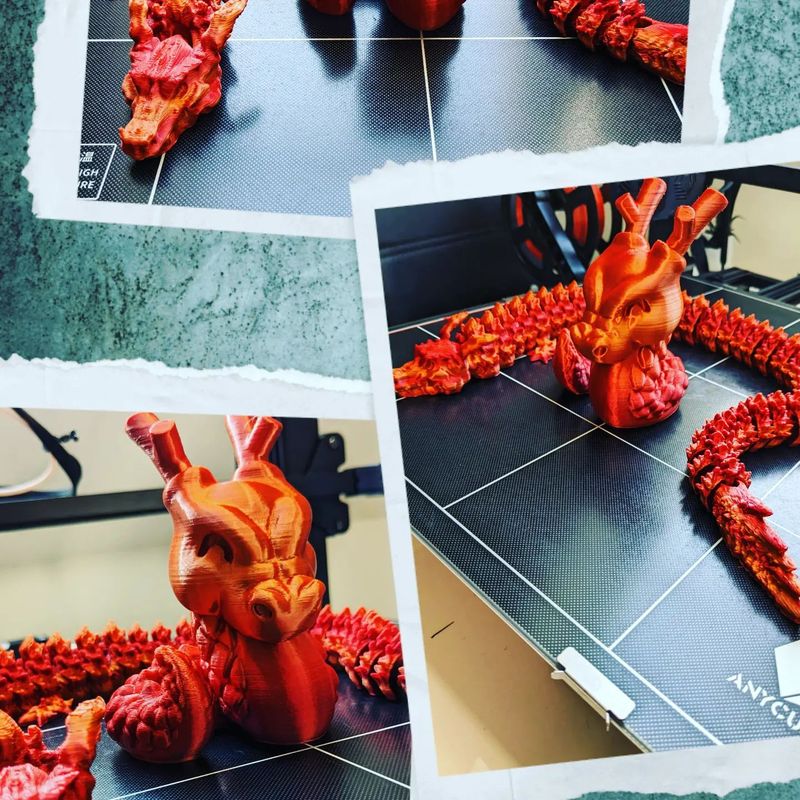
Credit: @strange_craftworks_de / Instagram
- The Anycubic Kobra Max offers a huge build volume, making it ideal for producing large objects such as props and costume helmets in one piece.
- The printer features an automatic bed leveling system that physically taps the bed at 25 points around a grid, ensuring extremely accurate results.
- With the nozzle temperature of 260 °C and heated build plate, the Kobra Max can work with a number of consumer filaments, including PLA, TPU, PETG, and ABS.
- Thanks to the carborundum glass build plate, the machine ensures strong first layer adhesion and easy print removal after cooling down.
- The device comes with everything needed to get started, including tools to build and maintain the printer, a plastic scraper, nozzle cleaner, grease, and microSD card with a USB adapter.
- Despite its size, the Kobra Max is easy to assemble, with most of the printer coming pre-assembled in two large sections.
- Due to its large footprint, the Anycubic Kobra Max requires a significant amount of space to operate.
- The printer is a "bed slinger", which means the bed moves back and forth during printing. This can lead to issues with print quality, especially for larger prints.
- Large models can take a significant amount of time, often days, to complete.
- The device consumes a lot of filament, especially when taking advantage of its build volume.
3-in-1 — Snapmaker Artisan
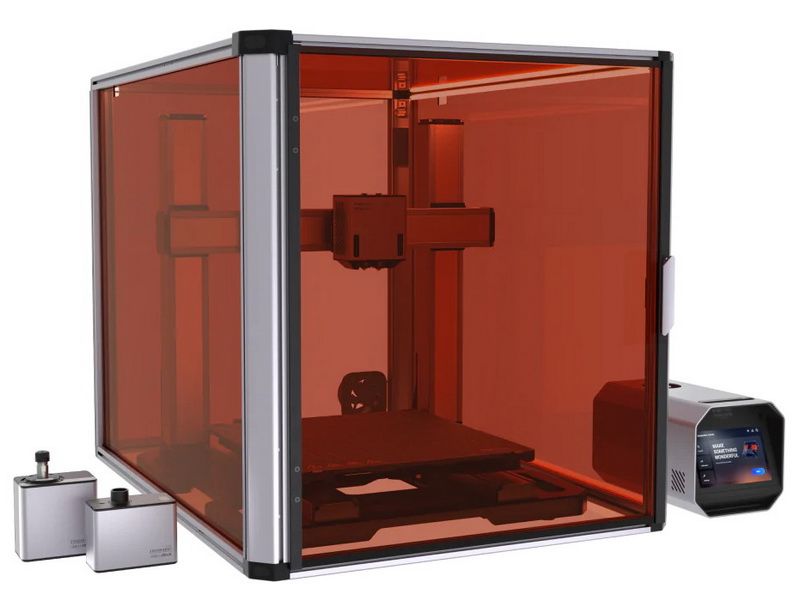
Versatile makers might be interested in a high-performance 3-in-1 machine — Snapmaker Artisan. It is a modular 3D printer with CNC carving and laser engraving functionality that is aimed at fast, accurate, and reliable user experience. As an improved version of the original Snapmaker and Snapmaker 2.0, the Artisan model features optimized print speed, higher precision, wider material compatibility and accessibility.
Speaking of 3D printing, the Artisan comes with a 300 °C dual extrusion module that supports PVA, HIPS and other dissolvable materials for smoother work with supports. Its massive work area of 400 x 400 x 400 mm allows the users to create single large or multiple smaller objects for better cost-efficiency. Due to a zone-heated bed with a 260 x 260 mm high-temperature zone, it is possible to save even more time and power when printing. Enhanced stability is ensured by a solid all-metal design with industrial-grade transmission technology, smart motion control algorithms, and auto leveling in just 3 steps that provide ±0.1 mm dimensional accuracy when printing at a high speed of 180 mm/s.
Another important feature of this complex solution is a quick swap design for platforms and toolheads (including hotends) that can be interchanged in one minute. The tailor-made software Snapmaker Luban is capable of detecting nozzle sizes and types and offering customized configurations for streamlined making of prototypes, functional parts, etc.
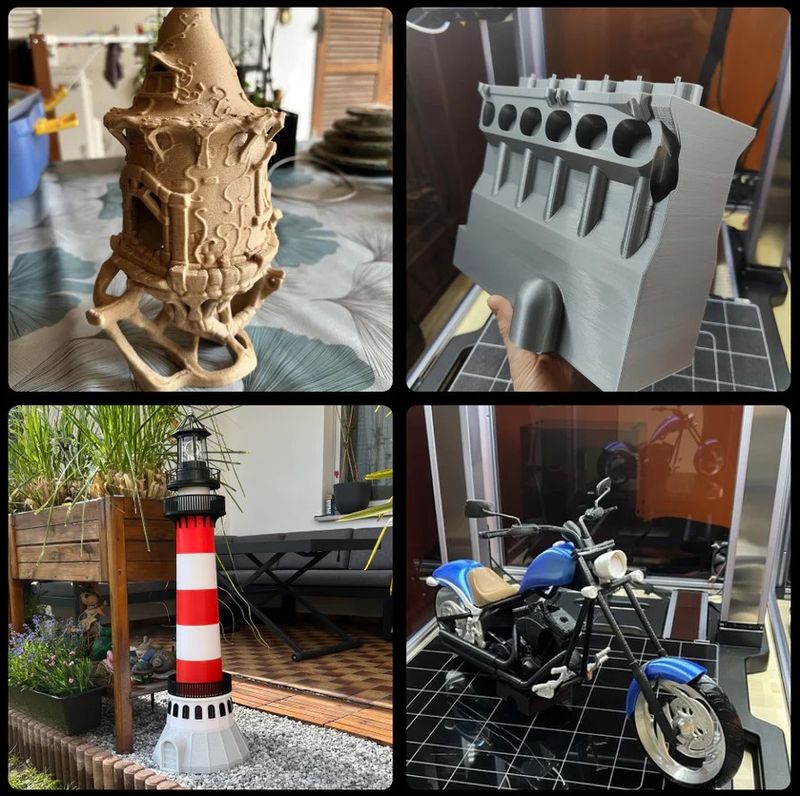
- The Snapmaker Artisan is a versatile 3-in-1 machine capable of large-scale 3D printing, CNC carving, and laser engraving.
- It offers a massive build volume, rapid speeds, and quick release modules that snap into place in a matter of minutes.
- The Artisan’s build plate is made of glass on one side and PEI coating on the other, which makes for strong adhesion of various filaments.
- Ultra-wide, full-color 7" touchscreen with a live display of working status makes for intuitive controls and smooth operation.
- The machine comes with an enclosure that provides lighting, ventilation, dust control for the CNC, optical safety for the laser, and warmth for printing advanced filaments.
- A separate 3D printing version without additional modules is also available.
- The Snapmaker Artisan has a large footprint, requiring a significant amount of space for operation.
- The machine may seem rather expensive for the budget segment.
- Despite its capabilities, the printer is not that good with TPU.
- It is limited to proprietary Snapmaker replacement parts.
Best resin 3D printers for beginners in 2023
Just like with the budget FDM printers before, we’ve decided to choose a single best model for each price and size category. Check out the most outstanding resin 3D printers with the slightest learning curve and streamlined, user-friendly experience.
Under $1000 — Phrozen Sonic Mini 8K
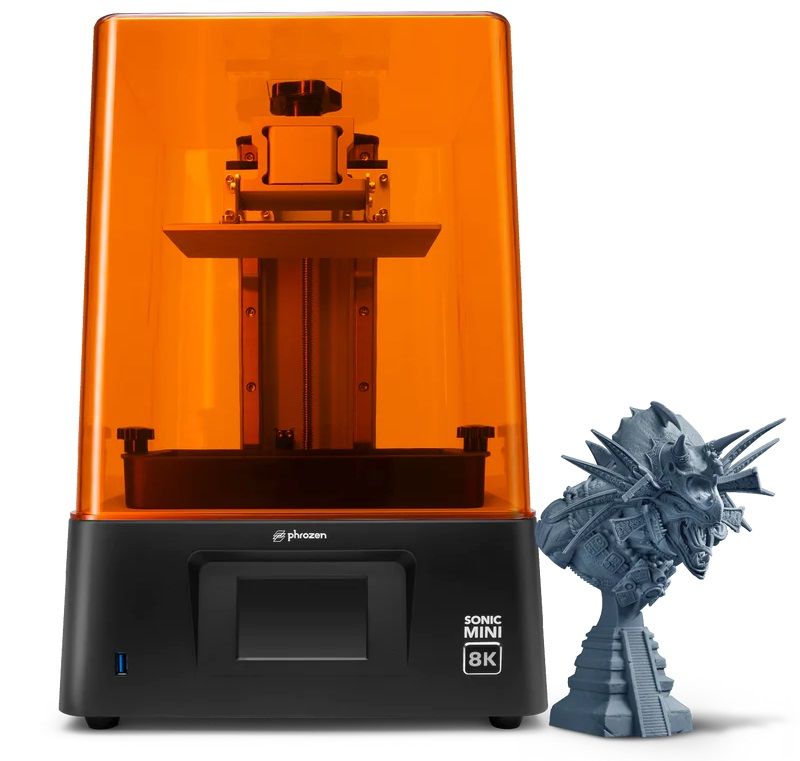
Starting with the highest price tag among budget models, let’s take a look at the Phrozen Sonic Mini 8K that, as its name suggests, features a remarkable resolution of 22 µm and 1152 ppi. However, it is not the only reason why the product has landed in our list.
Overall, the machine boasts impressive characteristics, which make it stand out from other devices in the consumer electronics space. Apart from the 7.1" LCD screen and 18 cm Z-axis, which is great for small highly detailed objects, such as tabletop miniatures, the Sonic Mini 8K is built with reliable components ensuring high print speed, uniform light exposure, and stable operation with top-quality outputs. Considering the sphere of its application, the device offers a sufficient build volume of 165 x 72 x 180 mm perfect for single medium-sized models.
For its price, the Phrozen Sonic Mini 8K offers a solid foundation for LCD 3D printing exploration and small businesses. Thanks to its budget-friendliness, cost-efficiency, and ease of use, the machine is an excellent choice for entry-level makers.
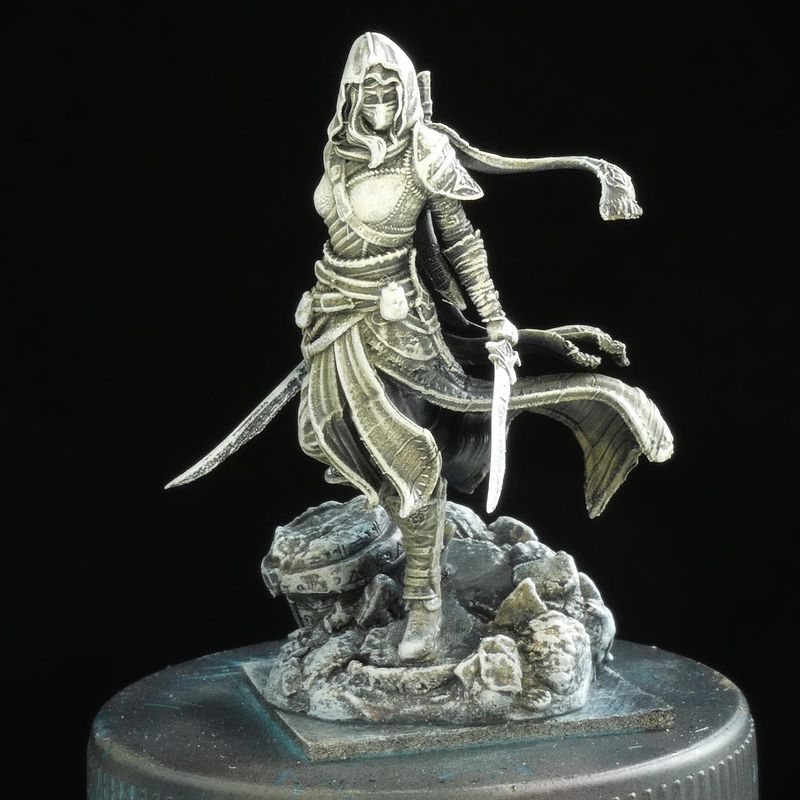
Credit: @abyshaii / Instagram
- The model provides the highest resolution on the market, which allows the user to create some of the most intricate designs.
- The printer comes pre-built and is easy to calibrate, making for a great out-of-the-box experience.
- Due to the frosted laser cut build plate, the device ensures perfect adhesion throughout the whole printing process.
- The high-grade dual linear rails provide enhanced stability, which in combination with the linear projection LED module for better light uniformity delivers high-quality sharp models.
- In terms of its build volume, the Phrozen Sonic Mini 8K is twice the price as competitors.
- The build plate is difficult to clean, which can be a hassle when changing materials or cleaning up after a print.
- The device relies on a USB stick for transferring files from your PC to the printer, which is easy to lose due to its small size.
Under $500 — Creality Halot-One Pro
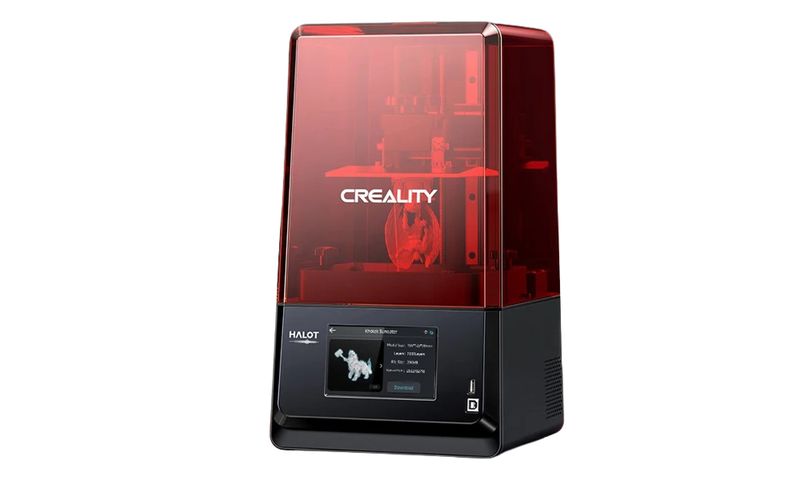
The Creality Halot-One Pro is a fresh upgrade of the manufacturer’s popular Halot-One 3D printer featuring high precision, decent build volume, and increased accessibility. With the independently developed Integral Light Source ensuring over 90% light uniformity for higher accuracy of complex structures and print speed of 1–4 seconds per layer, 3K resolution, and numerous quality-of-life features, the printer is definitely worth your attention.
One of the main benefits of using the Creality Halot-One Pro is its advanced connectivity and remote control via Creality Cloud App, which offers abundant model resources, cloud slicing, monitoring, and one-click printing. Apart from the brand Halot Box slicer, the device is fully compatible with Lychee and ChituBox. For safe operation, the printer is equipped with the air filtration system with activated carbon that effectively absorbs most of the resin odor.
Thanks to its powerful light source, decent build volume of 130 x 122 x 160 mm, and affordable price tag, the Creality Halot-One Pro can be used in a variety of personal applications, such as the production of jewelry pieces, dental models, prototypes, tabletop miniatures, etc.
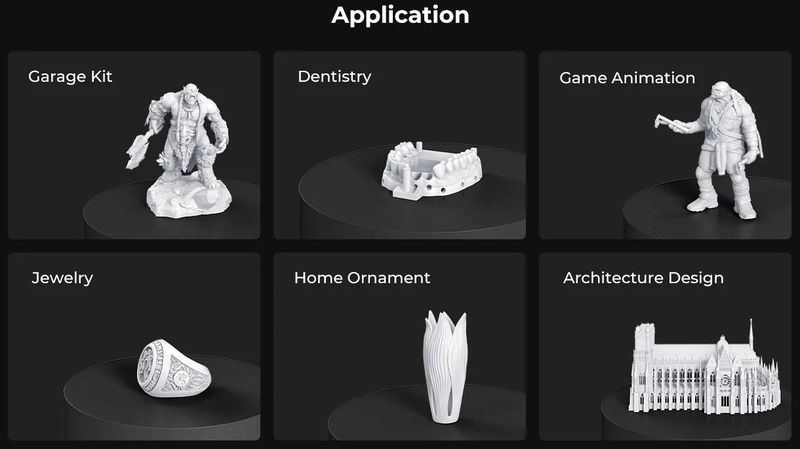
- Due to the proprietary light source, powerful processor, and stable construction, the printer provides outputs of impressive quality.
- The device is exceptionally well-made for a printer this affordable. It boasts an all-metal body with dual Z-axis linear rails and T-type screw for improved printing precision.
- The printer is easy to use. Essentially all you have to do is plug the machine in and start printing. Compared to FDM printers, the bed leveling is very simple.
- The activated carbon filter system makes for increasingly safe and comfortable user experience.
- The Halot-One Pro is packaged extremely well with no room in the box to move around during transit.
- The main problem with the printer lies with the Creality App, which is a little laggy at times and sometimes shows that the printer is offline even if it’s not.
- The HalotBox slicer needs slight improvements with its optimization suffering from the same issue as the app.
Under $300 — Elegoo Mars 3
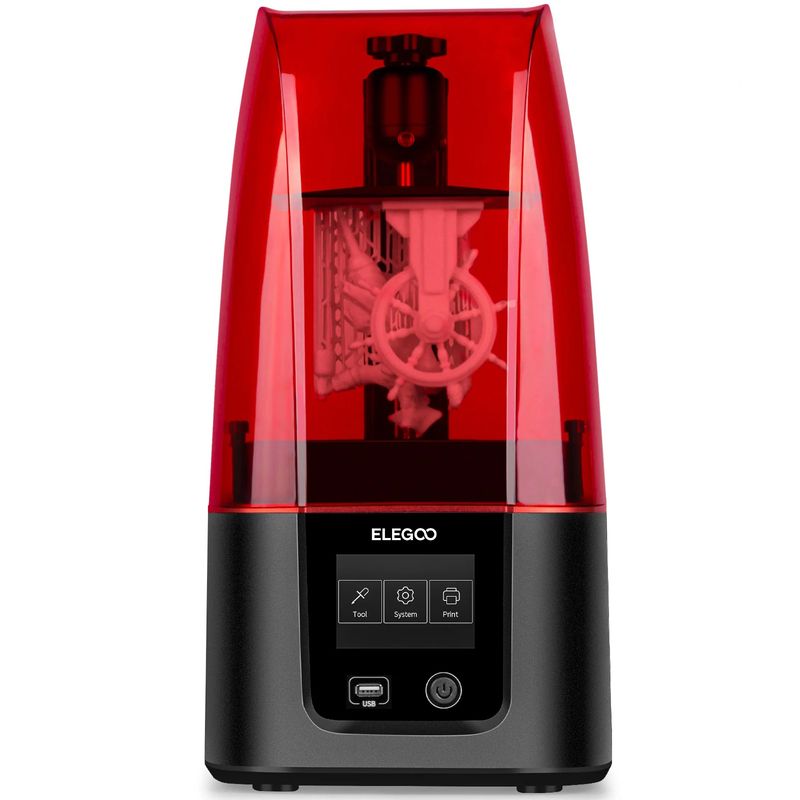
The Elegoo Mars 3 is a professional MSLA resin 3D printer that offers a high-resolution printing experience at an affordable price. Engineered with a potent COB light source and efficient heat sink system, it is capable of creating highly detailed prints very close to original models with just a 2.5 second per layer cure time and 0.035 mm XY resolution.
For its conveniently small footprint, the machine offers quite a large build volume of 89.6 x 143.43 x 175 mm. Overall, the Mars 3 stands out for its stylish and futuristic design with intuitive controls and simple maintenance, including easy bed leveling. Thanks to the solid linear rail, the machine provides smooth and silent operation, while the sandblasted build plate ensures proper adhesion and simple removal of the printed models. Thus, you are sure to get desirable results even with the most intricate projects, like this Alien figurine below.
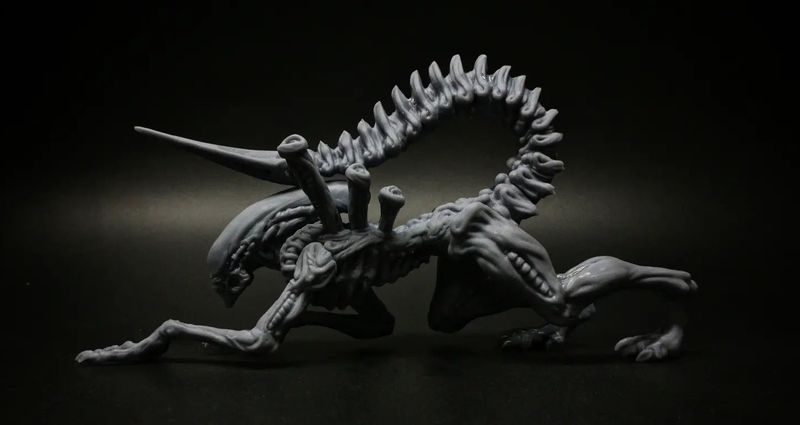
Credit: @crafting.racoon / Instagram
- The printer’s 4K resolution allows for the creation of highly detailed models.
- Fast curing ensures high accuracy and general quality of the printouts, not to mention the accelerated printing process.
- Due to the native integration with ChituBox, there is no need for software tweaking.
- The leveling procedure is so simple that it almost feels like cheating.
- The plastic base of the printer feels a bit cheap compared to metal bases in this price range.
- The included test print may lead to frustration for first-time users.
Under $200 — Elegoo Mars 2
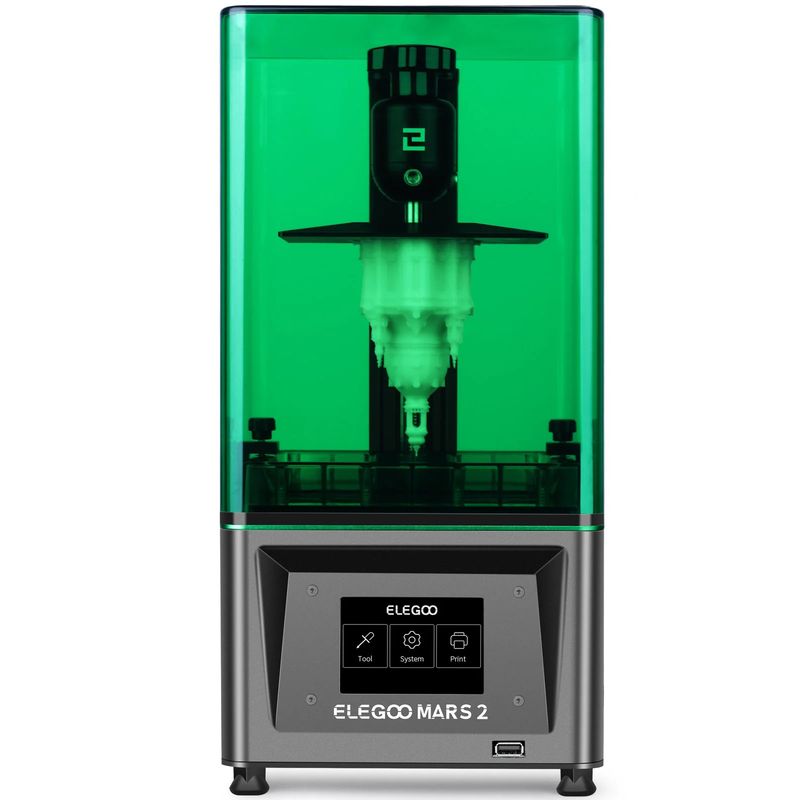
The Elegoo Mars 2 is a mono LCD 3D printer that is capable of fast high-resolution printing with less maintenance involved. Being a truly budget device, it still offers a decent 2K HD resolution alongside rapid curing of only 2 seconds per layer, which makes for enhanced printing efficiency. Its 6.08" monochrome LCD with new light source structure boasts an impressive lifespan and provides stable performance during long term printing, thus saving your costs.
To guarantee a comfortable and safe user experience inherent to all brand products, the Mars 2 is equipped with an integrated air filtration unit. The printer’s solid metal construction with a compact footprint and decent build volume of 129 x 80 x 150 mm gives it a sturdy feel and makes it suitable for a wide variety of personal applications. And just like the previous model, the Mars 2 has a newly designed sandblasted build plate for better adhesion.
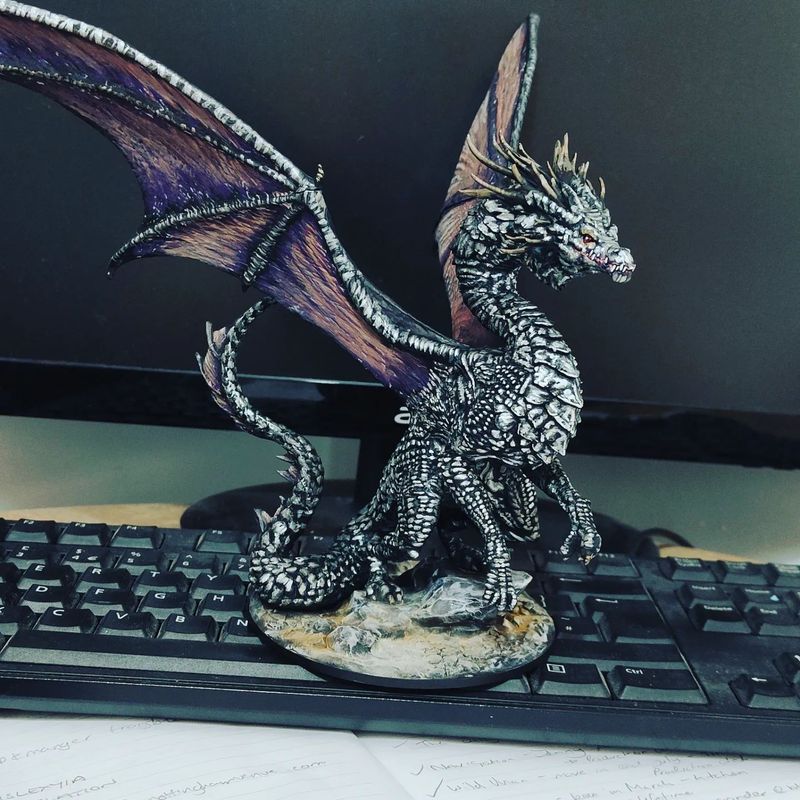
Credit: @tuffs105 / Instagram
- The printer offers high-resolution printing with user-friendly functionality at a relatively low price.
- It comes with a built-in air filtration system and some other useful features, such as a spring-loaded self-leveling build platform.
- The CNC machined aluminum body gives the Mars 2 a robust and durable feel ensuring reliable resin 3D printing.
- To provide convenient use, the printer’s interface is available in 12 languages for customers all around the globe.
- The build volume might feel limited for those who wish to create larger models.
- The preloaded test print leaves much to be desired and can lead to frustration for some users.
Mid-size — Elegoo Saturn 2
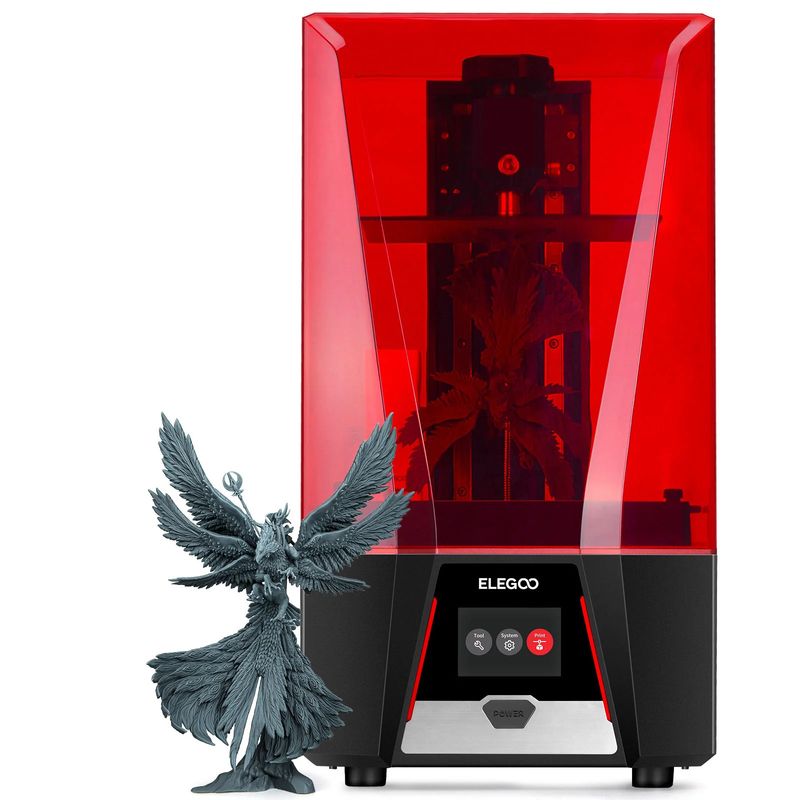
When it comes to budget medium-sized resin 3D printers, the Elegoo Saturn 2 is clearly the best choice in the category. With a powerful Fresnel collimating light source and 10" 8K mono LCD screen, the machine has an ultra-fine XY resolution of 28.5 microns and delivers highly detailed 3D models with a cure time of only 1–3 seconds per layer. In addition, the printer comes with a capacious build volume of 218.88 x 123 x 250 mm that lets one produce quite large models.
The Saturn 2 is built with a dual linear guideway and non-slip hexagon socket leveling screws making for extra-steady and precise movement. Due to the build plate with sandblasted surface, the printer provides better adhesion, while PFA release liner ensures easier model removal and less release tension. The machine also comes with an activated carbon filter to absorb the characteristic resin odor. Another notable benefit is the printer’s universal material compatibility.
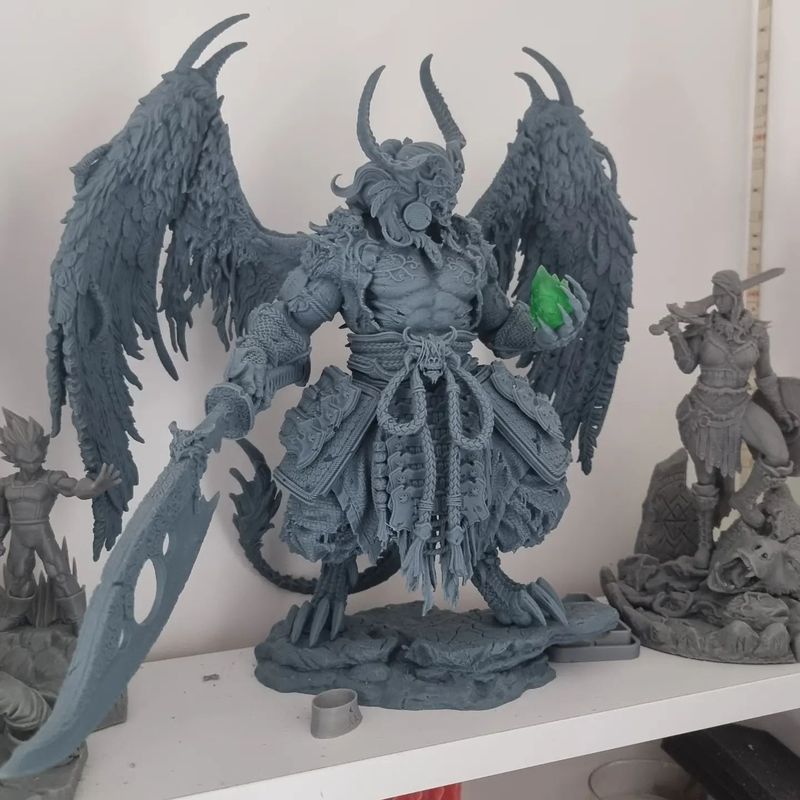
Credit: @maximestf / Instagram
- With its 8K resolution, the Saturn 2 offers stunning print quality adding details that even injection-molded models would be hard-pressed to beat.
- The decent build area allows for printing much larger models or many smaller objects in one go.
- The activated carbon filter is an important quality-of-life upgrade that helps keep your working environment fresh and pleasant.
- Due to high-quality components, the entire machine feels well constructed.
- The lid of the printer is rather big to lift off, requiring enough clearance to remove the top. This significantly limits the potential installation sites.
- The USB port is awkwardly placed on the side of the machine, far to the back. This can cause inconvenience when the printer is used in confined spaces.
Large-format — Phrozen Sonic Mega 8K
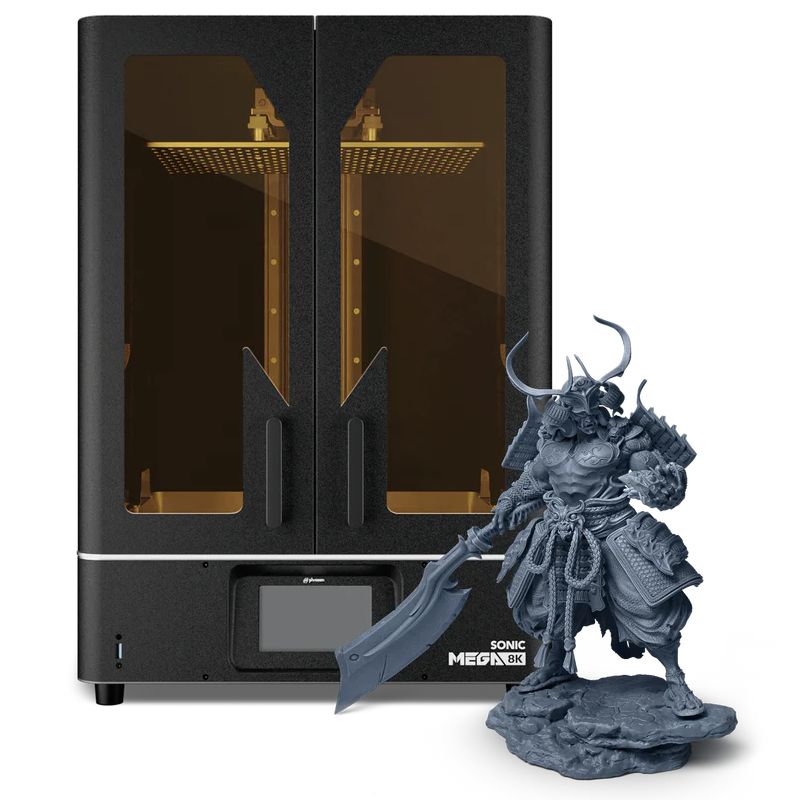
Last but not least in our list of best resin 3D printers for beginners is the Phrozen Sonic Mega 8K — an industrial-grade mono-LCD 3D printer with an impressive build area of 330 x 185 x 400 mm, great print speed, and ultra-high resolution. With a machine like this, one can easily print large-scale detailed models at a professional level.
The printer comes with a 15" monochrome LCD panel and can print layers at a minimum layer height of 10 microns, with an XY positioning accuracy of 43 µm. This makes for exceptionally accurate models with complicated designs and extremely smooth exterior surfaces. To add to the overall quality of printouts, the machine is equipped with a perforated print platform that ensures improved adhesion and time savings.
For smoother user experience, the Phrozen Sonic Mega 8K is optimized to work with the ChituBox slicer and can utilize all of its features and new functions. As a nice bonus, the build plate is pre-calibrated before shipping allowing the user to start printing right after unboxing. Despite some potential complications with operation and maintenance, with the right approach the machine can work around the clock and produce top-quality models and parts.
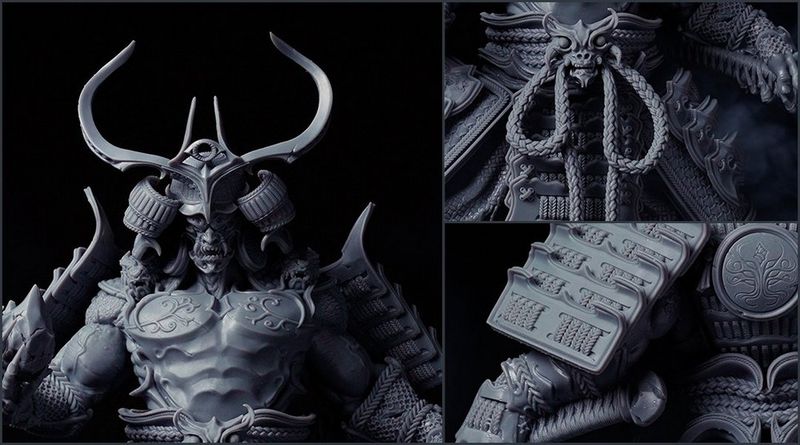
- The printer offers outstanding 8K prints with a high level of detail.
- With an enormous build area, the machine allows for printing really huge models in one go, which is particularly great for mass production.
- The Sonic Mega 8K features an all-metal exterior that strengthens the entire structure and makes it much more sustainable for long-term usage.
- Like the rest of the company’s products, the printer can work with both self-developed and third-party 405nm resins.
- The fully compatible ChituBox slicer provides new specific features supported by the printer’s board and firmware.
- The printer lacks air filtration and a heater for the printing area.
- Despite its budget price tag, the Sonic Mega 8K might be hard and expensive to work with, requiring a large amount of consumables, specially equipped room for space and ventilation, and a lot of time for maintenance.
- The perforated platform can leave bulges on the bottom layer of the print.
- Due to the printer’s large size and high resolution, the user mostly deals with heavy sliced files, which makes network transfer impractical.
Bottom line
Knowing their budget, necessities, and final goals, one will easily find an accessible 3D printer of appropriate price and quality to begin exploring the ever-expanding world of additive manufacturing. The modern market provides a variety of decent options for beginners, hobbyists, and users with a limited budget, from cost-effective technologies and printing methods to a wide range of affordable materials with universal features. Start looking for your perfect variant today and you will see that your plans and dreams are closer than they seem.
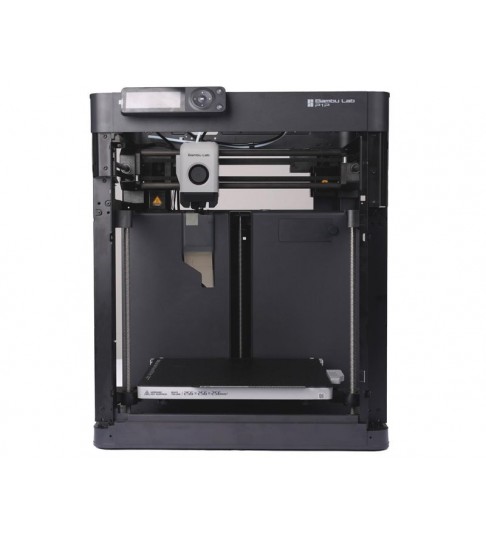
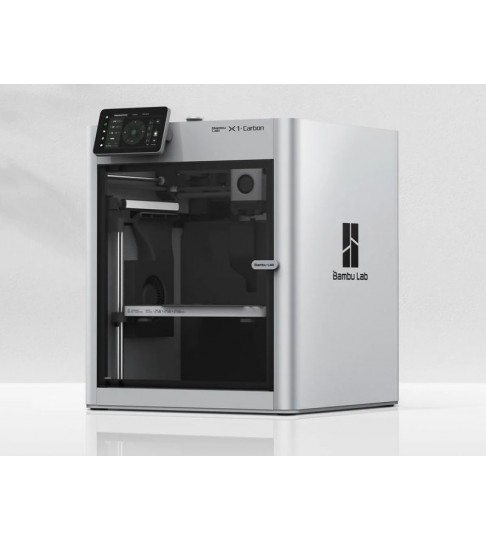

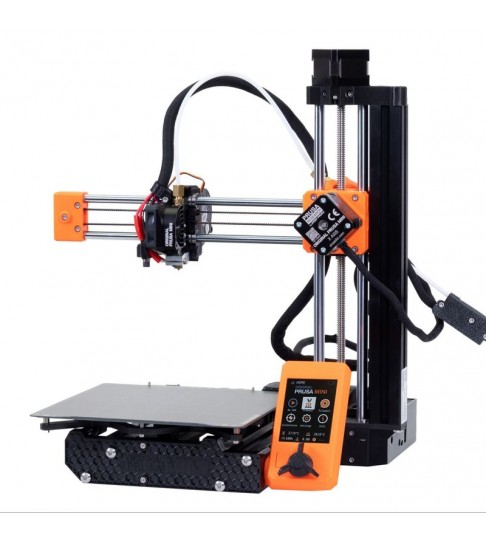


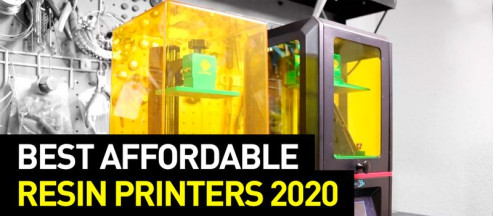
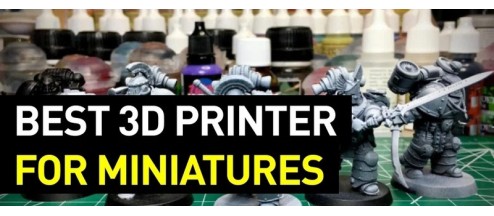
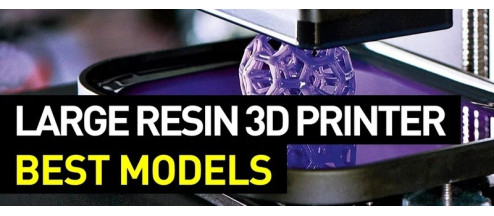



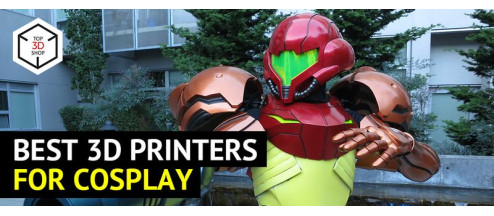
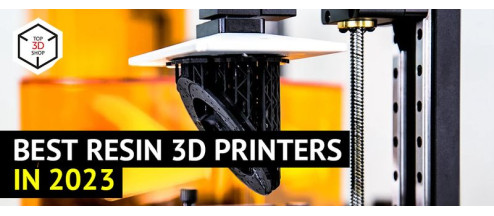
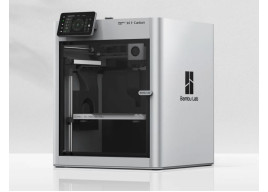
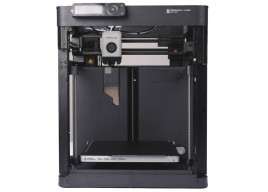
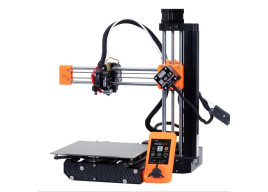
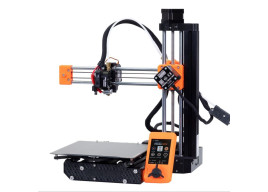
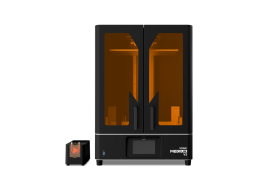
Write a comment